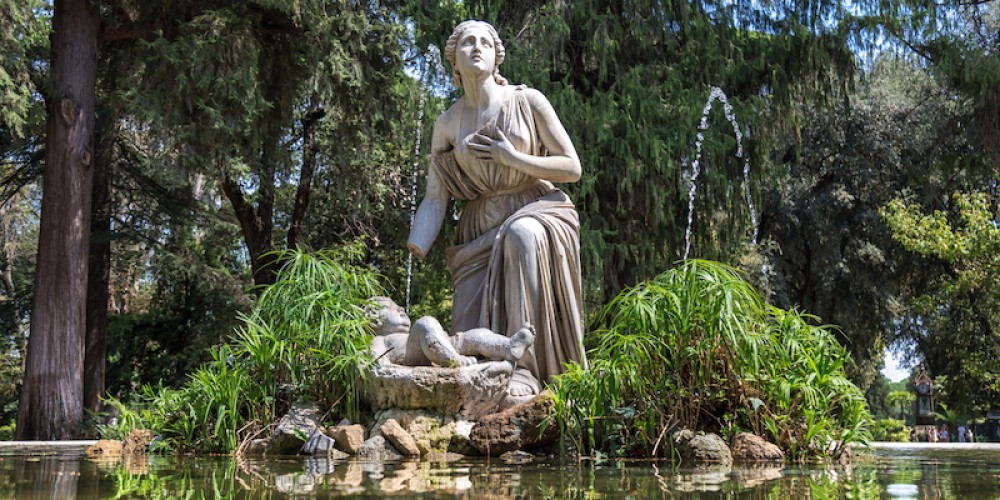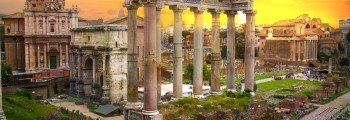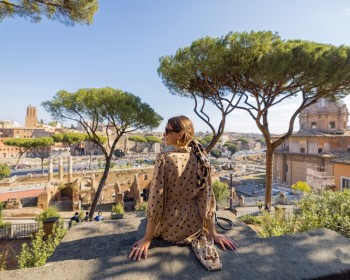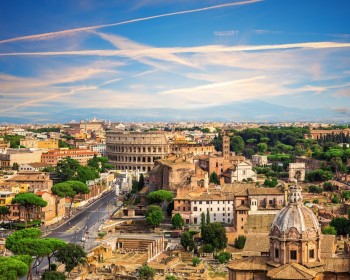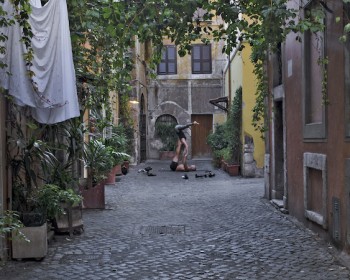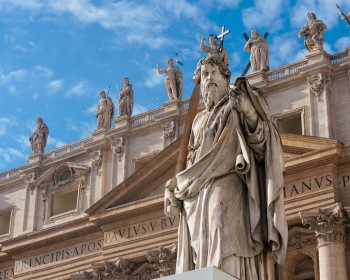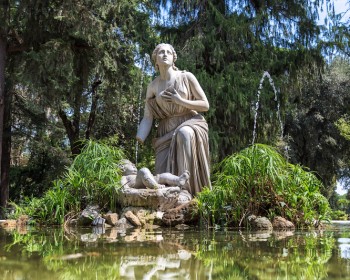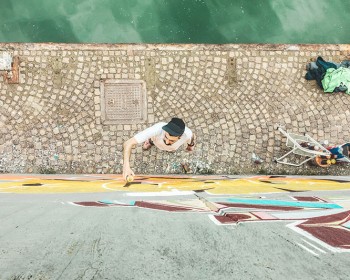Green Rome
Not just monuments, museums, and squares. The city of Dolce Vita is known and appreciated by locals and tourists alike for its green oases that arise right within the urban fabric. From north Rome to south Rome, amidst buildings, streets, and avenues, small and large green lungs emerge before your eyes, an ideal destination for pleasant walks in the open air or for relaxing breaks between one commitment and another.
Some Historical Background
One of the parks where not only is it possible to take long and relaxing walks or read a book in the shade of a tree is Villa Borghese, a public park in the English style rich in monuments, gardens, statues, museums, and panoramic views.
First, a bit of historical background: the name of the park derives from the first residence of Cardinal Scipione Borghese, built at the beginning of the seventeenth century. The Cardinal's desire was to create a villa - now known as the Borghese Gallery - that reflected the prestige of the family and at the same time housed his magnificent art collection. The residence, which covered a total of 80 hectares, was then completed with decorations, sculptures, small fountains, and a park.
The Villa: What to See
To visit the main attractions of the Park, allow yourself a few hours of your time. What awaits you is a varied mix of works and installations of different kinds; a true open-air museum capable of satisfying the tastes of all visitors.
Here is a list of places you absolutely cannot miss:
- Pincio: an extension of Villa Borghese on one of the most well-known hills in Rome. For your selfies and souvenir photos, head to the Pincio Terrace which overlooks directly onto Piazza del Popolo and offers a breathtaking view of the city, beyond St. Peter's Basilica.
- The lake of Villa Borghese: one adjective above all: enchanting. Built in 1766, it is a delightful body of water in the center of which is an artificial island where the Temple of Aesculapius stands, inside of which is the statue of the god of medicine recovered from the Mausoleum of Augustus. If you're feeling romantic, you can rent one of the rowing boats available on the shores of the lake.
- Water clock: Built in 1867 by Professor Giovan Battista Embriaco with the intention of combining science with the energy of nature. It is positioned in a tower in the center of a pond, with its water coordinating the timing mechanisms.
- The Biopark: the largest still call it the Zoological Garden. It is one of the oldest zoos in Europe, having been created in 1908 in a totally innovative way: instead of cages and bars, Hagenbeck, its creator, inserted ditches and canals that safely separated the public from the animals. The result was a harmonious place, where it felt like the animals lived freely and without constraints.
- Piazza di Siena: commissioned by Marcantonio IV Borghese in 1792 and clearly inspired by the city of Siena and its famous Piazza del Campo where the Palio was already being run. Since 1922, it has been a tradition every year to organize an international show-jumping competition at Piazza di Siena.
- Villa Medici: built on the remains of the Horti of Lucullus in a hilly position above the Trinità dei Monti, from which it overlooks the center of Rome.
- Casina Valadier: commissioned by Napoleon Bonaparte in 1810, it was designed by the architect Valadier in neoclassical style. From the Risorgimento to the First World War, it was the meeting place of the Italian art and political world and beyond. After a period of decline, it was renovated and today is a splendid venue for events.
- Globe Theatre: a perfect replica of Shakespeare's famous Globe Theatre. With its summer performances, it is a favorite destination for theater lovers. Until his death, the great Roman actor Gigi Proietti was the Director of the Globe Theatre.
Maybe You Didn't Know That...
- The design of the Villa was imitated in other historic residences in Rome such as Villa Doria Pamphilj and Villa Ludovisi.
- Inside the Park, the intersections of avenues and paths are marked by fountains and statues, further characterizing the Park's architecture.
- Within the Park, there are 18 educational panels installed near the various park entrances and main points of interest. Each panel features a general map with explanatory texts and QR codes that allow you to listen to short podcasts telling the story of the villa and its attractions.
A Brunch in Nature
If you fancy a quick snack and find yourself inside the Park, the Cinecaffè offers a wide buffet of cold and hot dishes every day, as well as a delicious selection of desserts.
All the Info
Opening Hours: The Park is open to the public and has different hours depending on the season, as it observes the sunrise and sunset as opening and closing times.
How to Get There: Take metro line A and get off at the "Spagna" stop, then follow the signs starting from inside the metro.
By Car: The best option is to leave your car in a paid garage such as the Saba Parking in Piazza di Spagna - Villa Borghese or the Ludovisi Parking, both just a few minutes' walk from the Park.
Conclusions
A stroll through Villa Borghese is an experience of discovery of art and time, starting from the 1600s and reaching to the present day. A remarkable example of a noble country villa, commissioned by Cardinal Scipione Borghese to impress the elite of Rome and Europe at the time, and which still captures and fascinates visitors every day, centuries later.
```
